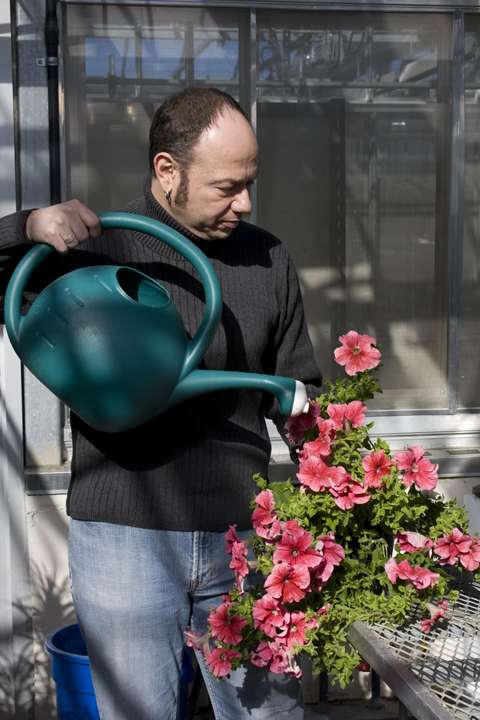FOR IMMEDIATE RELEASE: Kac's new transgenic artwork -- Natural History of the Enigma
Media Contact: Christopher James <james052@umn.edu>
Communications and Events Director, Weisman Art Museum, Minneapolis
Weisman Art Museum premieres Kac's new transgenic artwork: "Natural History of the Enigma"
Artist Eduardo Kac has created a new flower that expresses his own DNA only in its red veins
Kac calls the new flower "Edunia" — The exhibition opens on April 17, 2009

Eduardo Kac, Natural History of the Enigma, transgenic flower with artist's own DNA expressed in the red veins, 2003/2008.
The central work in the "Natural History of the Enigma" series is a plantimal, a new life form Kac created and that he calls "Edunia", a genetically-engineered flower that is a hybrid of the artist and Petunia. The Edunia expresses Kac's DNA exclusively in its red veins.
Developed between 2003 and 2008, "Natural History of the Enigma"will be exhibited from April 17 to June 21, 2009 at the Weisman Art Museum, in Minneapolis.
The new flower is a Petunia strain that Kac invented and produced through molecular biology. It is not found in nature. The Edunia has red veins on light pink petals and a gene of the artist is expressed on every cell of its red veins, i.e., Kac's gene produces a protein in the veins only. The gene was isolated and sequenced from Kac's blood. The petal pink background, against which the red veins are seen, is evocative of Kac's own pinkish white skin tone. The result of this molecular manipulation is a bloom that creates the living image of human blood rushing through the veins of a flower.
The gene Kac selected is responsible for the identification of foreign bodies. In this work, it is precisely that which identifies and rejects the other that the artist integrates into the other, thus creating a new kind of self that is partially flower and partially human.
"Natural History of the Enigma" is a reflection on the contiguity of life between different species. It uses the redness of blood and the redness of the plant's veins as a marker of our shared heritage in the wider spectrum of life. By combining human and plant DNA in a new flower, in a visually dramatic way (red expression of human DNA in the flower veins), Kac brings forth the realization of the contiguity of life between different species.
In anticipation of a future in which Edunias can be distributed socially and planted everywhere, Kac created a set of "Edunia Seed Packs", which are included in the exhibition. The "Edunia Seed Packs" contain actual Edunia seeds and are part of the permanent collection of the Weisman Art Museum.
For additional information, visit Kac's website: http://www.ekac.org/nat.hist.enig.html
Back to Kac Web
